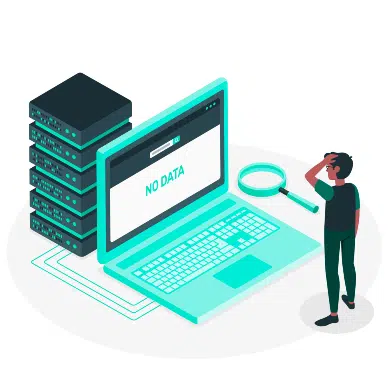Most startups fail, so how can yours succeed? It’s a complex answer, but part of that answer is by focusing on compliance from the beginning.
A recent study found that roughly 90% of startups fail within five years. A complementary study found that regulatory and legal challenges are the fifth most significant cause of startup failure, with the third largest cause being the inability to compete with the rest of the market.
Embracing a compliance-first approach allows you to better compete with your peers while preparing you for any potential regulatory challenges that may arise. Compliance for startups should not be considered optional — it should be viewed as an advantage.
It’s time to discuss why every startup needs to prioritize compliance to gain a competitive advantage, reduce the possibility of regulatory issues, and help secure valuable partnerships. Read on to discover why all businesses need to be compliant, not just big businesses.

Compliance is Not Just for the “Big Boys”
A common misconception about compliance is that it’s only valuable for big companies. In reality, startup compliance gives your fledgling business a significant advantage over your peers and prepares you for the future.
Another misconception about compliance is that it’s too costly to worry about until your business grows. Fortunately for startups, modern tools allow your business to achieve and prove compliance more straightforward than ever before. Automating mundane tasks and real-time analysis significantly reduces the time and resources necessary to become compliant.
If you aim to scale your business, prepare now by becoming compliant so you can grow properly.
Why Startups Need to Prioritize Compliance from the Beginning
Don’t wait until your IPO to start thinking about compliance. Instead, pursue compliance right now, so you’re ready for that day when it comes, along with several other immediate benefits. Some benefits that accompany becoming compliant now include the following.
Better Compliance Means Better Security
Many compliance frameworks and regulatory requirements focus on protecting your data and systems. If your systems are breached, and data is leaked, your customers or users are at risk. Therefore, compliance frameworks emphasize cybersecurity best practices to ensure you’re protecting sensitive information.
Cybersecurity for startups can be daunting. However, following a cybersecurity framework like NIST guides you through the process of securing your IT infrastructure. Rather than trying to figure everything out from scratch, you have a playbook to follow that will establish a baseline level of security. As a result, you’ll protect your systems, customers, and reputation — alongside meeting compliance.
Compliance also helps protect your reputation. Stopping data breaches avoids the reputation damage breaches tend to cause. Even large companies struggle to recover from reputation damage; how will your startup weather the storm?
Start Getting Value With
Centraleyes for Free
See for yourself how the Centraleyes platform exceeds anything an old GRC
system does and eliminates the need for manual processes and spreadsheets
to give you immediate value and run a full risk assessment in less than 30 days
Compliance Helps Win Bids and Obtain Partnerships
If your startup is trying to win B2B customers, compliance is an absolute must. Any reputable company within your industry will expect compliance with any applicable framework or regulations. For example, if you’re a healthcare startup, but you are not HIPAA compliant, you’ll struggle to land any new contracts.
It’s a standard procedure for businesses to conduct vendor risk assessments on new partners. Part of that assessment will include ascertaining your compliance status with regulatory requirements and dominant industry frameworks. If you can’t prove compliance, your compliant competitors will win the bid.
Prepare Now for Rapid Growth Later
Startups often struggle in the beginning stages but grow exceptionally quickly once the right investors or news coverage comes along. A compliance-first approach helps ensure that your policies and processes are streamlined and ready for growth. Re-visiting your procedures to obtain compliance once your company has experienced explosive growth will cause delays and stop your ability to take advantage of the momentum. It’s smarter to prepare your compliance in advance, and when the growth phase begins, you can confidently scale up your operation.
Get Started with Our Startup Compliance Checklist
Compliance can be complicated, which is why startups try to avoid it. But those who tackle the challenge head-on will reap the benefits discussed above. In addition, embracing a best practice compliance framework will help you streamline the entire process and save countless headaches.
Achieving compliance will look different for every startup, depending on your industry and operational jurisdiction. However, we can still provide a brief compliance checklist to help you know how to get started:
- Learn which frameworks and other regulations apply: Do you need to be HIPAA compliant? Or will more straightforward data protection suffice? Begin the process by understanding the significant compliance requirements that apply to your business. You may discover complying with some standards is required, while others are optional but preferred by your industry. Pursue them all and explore opportunities to crosswalk controls across several frameworks.
- Complete a thorough risk assessment: The precise framework for completing a risk assessment and what needs to be addressed will vary, but the overall process must be done. In order to meet compliance in any area, you need to understand which threats face your business and what vulnerabilities may be exploited. You will discover these with your risk assessment. Then, you must implement and document mitigating controls.
- Create thorough processes and procedures: Risk assessment is only the beginning. Once completed, you’ll need to begin risk management. Risk management involves understanding the risks your business faces and having documented policies to prevent or recover from them. Don’t worry; you don’t have to start from scratch. Many compliance frameworks will give you a starting point.
- Implement automated reporting: Achieving compliance with any framework, or regulatory requirements will need evidence. In the past, businesses had to spend untold hours on manual processes to find, compare and analyze all the relevant data. Modern tools like Centraleyes offer automated reporting to reduce the time spent on evidence collection and reporting.
- Continually monitor controls and re-evaluate risks: Remember, compliance isn’t just about filing reports. The goal is to protect your company, customers, and partners. Therefore, monitor implemented controls for effectiveness and adjust as necessary. Additionally, conduct a risk assessment regularly to identify any new and emerging risks.
The specific requirements that apply to your company may vary, but the above points will certainly be involved. Get started now so that by the time you need to prove compliance to your first major partner, you can proudly and quickly send the correct information and evidence.
Adopt a Powerful GRC Platform from the Beginning
You likely picked your software solutions with scalability in mind. For example, how many employees can chat on this app before I need to upgrade? What are the limitations of my CRM? A scalable mindset is fundamental and needs to also be applied to your governance, risk, and compliance (GRC) platform.
Centraleyes is a potent GRC platform that provides comprehensive risk assessments, automated reporting, control monitoring, and robust integrations to help you get started on the right foot. Our platform will help you achieve, maintain, and prove compliance. Is it time for your startup to become compliant? Book a demo with our compliance experts today to get started.
Start Getting Value With
Centraleyes for Free
See for yourself how the Centraleyes platform exceeds anything an old GRC
system does and eliminates the need for manual processes and spreadsheets
to give you immediate value and run a full risk assessment in less than 30 days





